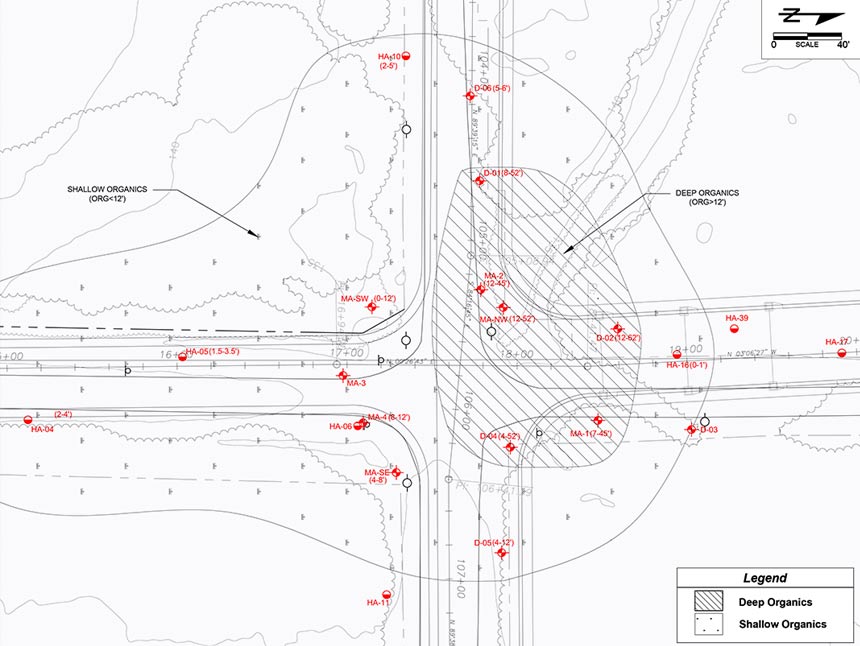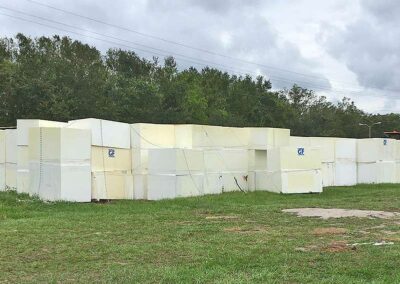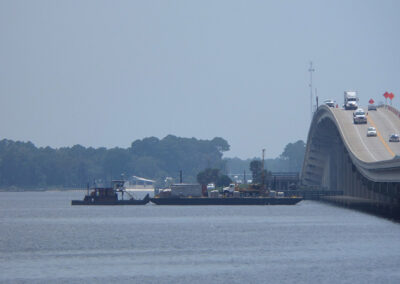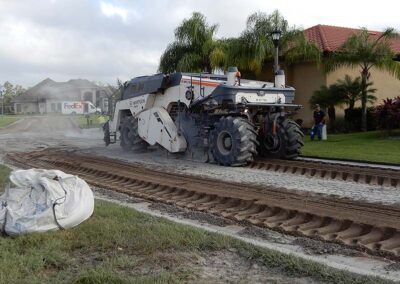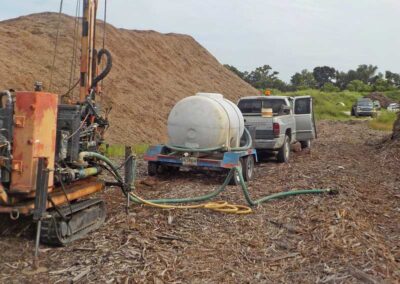Wabash and 10th Street
Soil Survey and Remediation
Lakeland, Florida
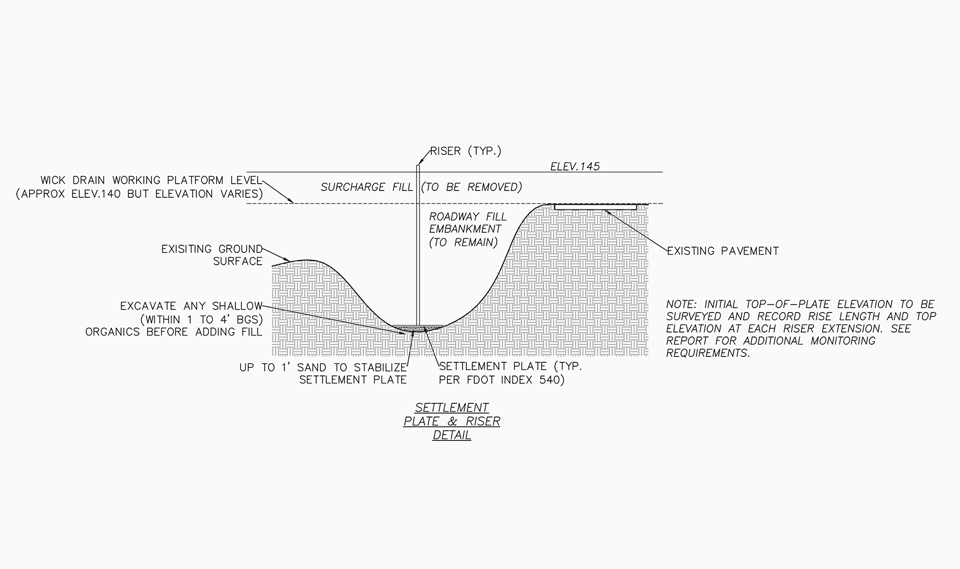
Owner
City of Lakeland, Florida
Client
Lakeland, Florida
Location
Lakeland, Florida
Related Services
Wabash and 10th Street
Geotechnical Investigation and Engineering
Madrid CPWG was asked to complete soil borings and laboratory testing to support the Civil Engineering design for a proposed roadway re-alignment, widening, and roadway extension in Lakeland, Florida. Upon completion of borings for mast arm poles, a deep and thick deposit of organics was discovered indicative of a paleo-sinkhole. The design included fill heights on the order of 5 to 10 feet that likely would cause long-term differential settlement conditions that would be unacceptable for the new roadway.
Madrid CPWG Approach
Additional scope items were added to delineate the sinkhole feature and to design a stabilization program. Some SPT borings were completed in 1 foot of water in an area too soft to stand on without placing boards to spread the load; Madrid CPWG completed those SPT (Standard Penetration Test) borings with our ATV (All-Terrain Vehicle) rig shown to the right. The borings revealed that the sinkhole and organics covered a wide area including most of the intersection. Re-designing the intersection to avoid the sinkhole was not an option as not enough land was available. Madrid CPWG evaluated multiple stabilization options and designed a detailed surcharge program utilizing wick drains to compress the organic soil in a very quick manner. Madrid CPWG coordinated the plan with the Owner to ensure minimal disruption to local residents and school bus routes.
Madrid CPWG Benefit
Madrid CPWG designed a stabilization program that would only have the intersection closed for 1 to 2 months for the surcharge program in order to provide minimal disruption to the public. Surcharging programs without wick drains can often run for many months or even more than a year, which would not have been acceptable to the owner. Surcharging was also found to be the most cost-effective option compared to a pile-supported roadway, deep excavations and other mitigation techniques.
